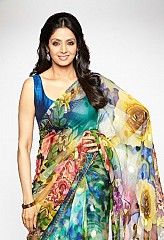

While it was the images as memories last week, this time it's the images as statements. A Malayalam magazine cover of a woman breastfeeding a baby has divided social media and discussion forums like never before, with a raging war of words regarding morality, obscenity and sensationalism. The magazine, a fortnightly for women in Malayalam called Grihalakshmi, published the issue by triggering the campaign “Breastfeed freely” as part of the International Women’s Day celebrations.
The headline of the cover, “Mothers tell Kerala - don't stare! We want to breastfeed,” also raised eyebrows, and the social media went abuzz with arguments pro and against the cover, the magazine and even the model. In fact, such a furore is a little weird for Indian public space, as the world has seen plenty of similar campaigns and magazine covers for the best interest of breastfeeding moms and babies. In 2016, a photo of Brazilian Minister Manuela D'Avila breastfeeding her baby in the National Assembly, Brazil's Parliament, went viral.
One year later, Australian Senator Larissa Waters addressed the chamber while feeding her 14-week-old baby girl. Even though western countries are considered to be less intolerant towards the public display of affection and breastfeeding, it took a considerable time to break the taboo and the censorship mentality among people when it came to women, the female body and sexuality. While the world is gearing up with more radical movements like the “Free the Nipple” campaign to desexualise women’s breasts, it’s encouraging to see that the Indian society is divided over the open breastfeeding row.
Earlier, a couple from Kerala was derided for sharing a picture of the mother, Amrita, breastfeeding her newly born, with a short note about the importance of breastfeeding. In a similar incident, South Indian actor Kasthuri was attacked on social media when her topless pictures of breastfeeding a baby went viral. The pictures were a part of a photo book project by the acclaimed American photographer Jade Beall. Now, it’s the turn of the Kerala based model, Gilu Joseph, who is featured on the cover of the controversial Grihalakshmi issue.
All these women from different parts of the world share a similar platform because they publicly breastfeed babies and exposed their breasts, erupting similar kind of reactions in the society. In the Grihalakshmi cover row, there are two types of critics raging on the social media platforms. The prominent group reprimands the cover for moral reasons and the other group tags it as a marketing stunt with apparent middle class, elitist undertones. But, the problematic placement of breasts as a sexual object is overlooked by both the brigades.
Apart from their connections to fertility or survival, breasts are always at the centre of the gaze of male-dominated societies as the primary objects of desire for the menfolk. They often, tease, twist, daydream, and pass ridiculous, insulting or derogatory comments about the size, shape and colour of the breasts of the womenfolk as if it’s a gender ritual. Our movies, mass media and other cultural channels also have been taking part in this objectification for ages. As a result, anything and everything connected with breasts became instantly sexual and hence a taboo.
Deities, idols and pictures from the ancient times hint at a time when breasts were not a taboo, that accused of causing instant erotic impulses in men. As the world civilisations became more and more patriarchal, the role of breasts, along with that of women, was redefined and they compelled to shoulder the guilt of rousing men to the sin of the flesh. Such eyes of censorship are still the skeletons in the cupboard of our society, which is evident in the stringent remarks and reactions against the Grihalakshmi cover girl.
The other major criticism against the cover is sharpened by political correctness. It takes the magazine, head-on for using a model and adorning her with symbols of an elite Hindu woman. They also point out at the sensationalism and the resulting attention the cover has garnered. But, as long as Kasthuri, Gilu Joseph, Amritha, Manuela D'Avila, Larissa Waters, or any other woman is attacked for what they have chosen to do, such criticisms cancel itself on the face. The priority here is in the immediacy of body politics and not its correctness.
Another crucial argument is that using a non-mother professional model for such a gender-sensitive campaign lowers it to a stunt, whereas cases like Amrita breastfeeding her baby is genuine awareness. Considering the fact that the latest trends and fashions are always assimilated by consumer products and services for their marketing purposes, and, if body politics have become a trend or fashion that cannot be ignored by a mainstream, consumer magazine like Grihalakshmi, it’s a positive turn and far-reaching twist.
This controversy will be replaced by a new one within two weeks. But the cover picture as a statement of body politics and the cultural shock it generated will linger and carry forward as a political and social cue. It’s political intentions are not constrained within the pages of the magazine and the same picture will be criticised for its lean towards elitist Hindu woman image propagated by a majority of cultural vehicles. It’s the natural course an image which bear the weight of a political statement, either knowingly or unknowingly.
The mass media has played a pivotal role in the objectification of women so far and it's high time it gives the due back. After an unjust era of objectification, it is the era of vengeance by the so called objects. And, history underlines such act of vengeance with myths like a self amputated breast that burned down a city of injustice into ashes within hours. Men (and women), those breasts you ogle at are not just breasts anymore, but a political statement, beware!
Behindwoods is not responsible for the views of columnists.

OTHER LATEST BEHINDWOODS COLUMNS
RAGESH DIPU'S OTHER COLUMNS
- The Blackness of Kaala and Portrait of the Superstar as an Actor
- Sridevi, the first heroine to crack the male supremacy in Indian Cinema
- Chekka Chivantha Vaanam - Why we yearn for a Mani Ratnam film
- Why Naachiyar is not a Typical Bala Film, but More
- From Kolaveri to Priya Prakash Varrier, And How #hashtags Grow Bigger Than the Movies!
- From Mahesh to the Fakir: The Extraordinary Journey of Dhanush



